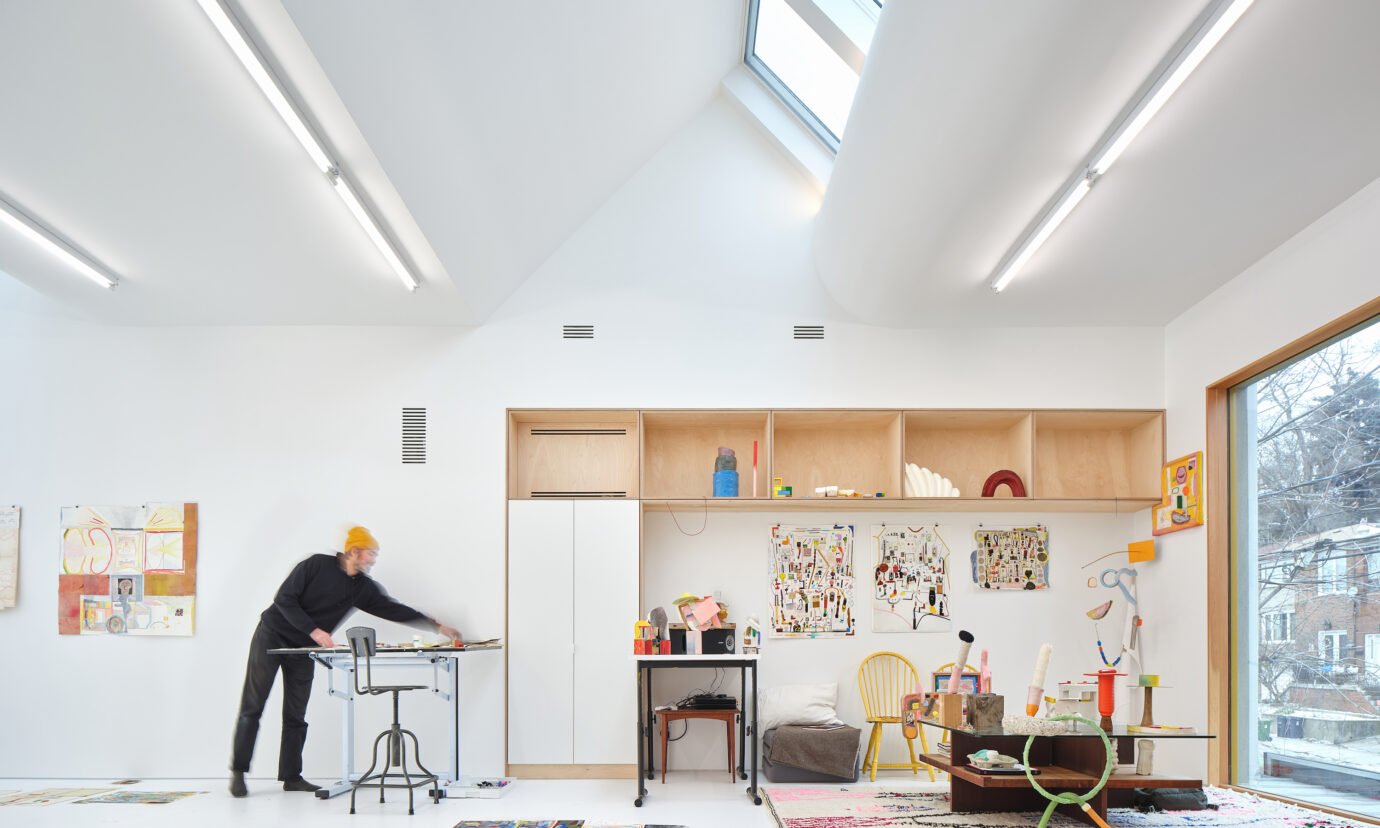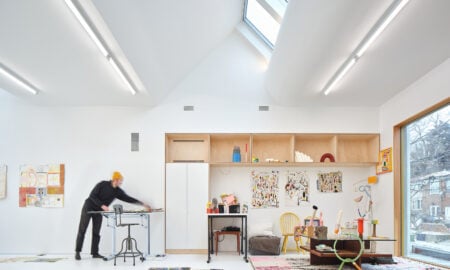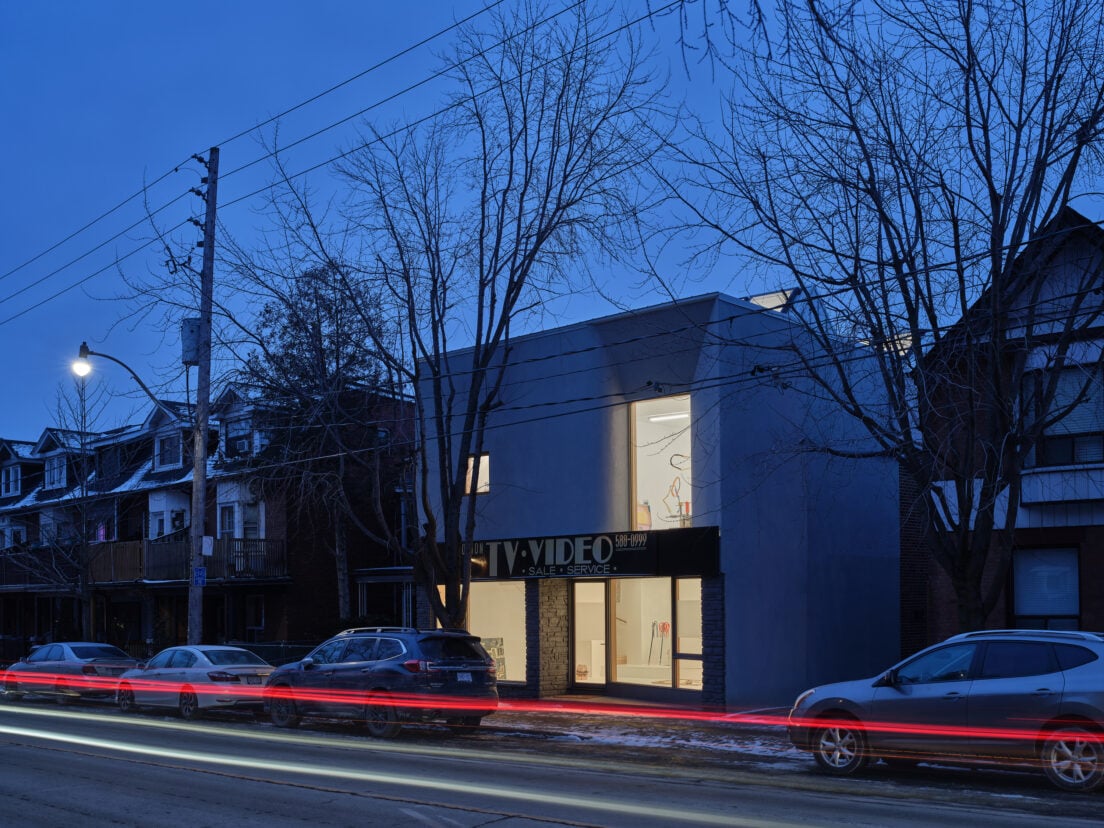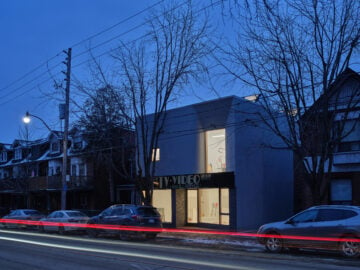Davenport Artist Studio Breathes New Life into Neighbourhood Landmark




How Creative Union Network transformed a century-old commercial storefront into a live-work studio for artist Leif Low-Beer
If you’ve driven along Davenport Road, you’ve likely spotted the old TV and radio repair shop—a modest landmark in its own right, standing out amid rows of houses. This familiar fixture, once a quiet community staple, has now been transformed into a contemporary live-work space that’s equal parts studio, gallery and creative sanctuary. Designed by Creative Union Network, the project honours the building’s 150-year history while transforming it into a functional and adaptable space tailored for artist Leif Low-Beer. The architecture preserves the quirky character of the original storefront—right down to the old signage—rooting the Atelier in its neighbourhood history while giving it new purpose.
The heart of the Atelier lies in its expansive, light-filled second floor, designed to facilitate Low-Beer’s immersive installations, which span across drawing, photography and sculpture. “All I was looking for was a big room,” he shares, summing up his desire for an open, adaptable environment that would support his creative process. But finding such a space in Toronto’s tightly packed real estate market proved to be a challenge, making the project’s final form all the more meaningful. The building’s solid brick structure and slightly angled facade provided a solid foundation, while the single-story storefront offered an unusual footprint that Creative Union Network reimagined to maximize both function and aesthetic.
Architect Timothy Mitanidis and director Claudia Bader approached the redesign with a “less is more” philosophy, focusing on creating a neutral, spacious environment that would allow the artwork to shine. Subtle, clean finishes—whitewashed walls, minimalist shelving, and light plywood floors—let the space recede into the background. “We worked hard to make the architecture disappear,” says Mitanidis. The goal was to create a blank canvas of sorts, where the interior of the artist studio dissolves, leaving the viewer’s attention entirely on the art.
Natural light is a key element in Low-Beer’s practice, and the Atelier’s design takes full advantage of it. Skylights cast a soft, diffused glow across the studio, enhancing the airy feel and providing ideal lighting conditions for creating and photographing work. The team retained the original storefront’s angled window design, a nod to the unique alignment of Davenport Road, and expanded it with a bold second-story window that floods the space with daylight. Along the walls, hinged white panels reveal additional windows when opened, allowing even more light to fill the space.
Inside, the layout adapts to a variety of creative needs. The ground floor, once a commercial space, now functions as an intimate gallery, with flexible partitions allowing the space to shift from public exhibitions to private work. Sliding doors let Low-Beer section off areas for visiting artists—who he hopes will show work in the gallery space too—or host community gatherings without disrupting his own workspace. Bader explains that every inch was maximized for utility, with built-in shelving and nooks that double as work areas. “It’s designed to be as functional as it is flexible,” she says, highlighting how the architecture accommodates multiple uses without compromising its simplicity.
Beyond practicality, the project embodies a commitment to preserving history. The original storefront sign from the old repair shop remains intact, a nostalgic touch that locals recognize and appreciate. “It’s part of the neighbourhood’s identity,” says Mitanidis. By retaining these elements, the project respects the building’s past as a community landmark, merging historical character with contemporary function and showcasing how adaptive reuse can bring lasting relevance to older structures.
The artist studio stands as both a modern artist’s haven and a respectful homage to the past. Through the careful work of Creative Union Network, the building has been thoughtfully transformed to support creative expression while staying deeply rooted in its surroundings. The result is a space where art, history and community come together in the heart the city.
































